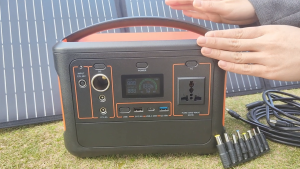More
Powering Progress: The Science Behind Developing Portable Power Stations for Camping
Powering Progress: The Science Behind Developing Portable Power Stations for Camping
Introduction:
Behind every innovation lies a journey of exploration and discovery. The production of outdoor portable generators is no exception. It begins with an extensive research and development (R&D) phase, where designers and engineers dive deep into the realms of technology, components, and materials. This is where ideas are transformed into reality, as prototypes are rigorously tested and refined to ensure optimal performance, durability, and safety. In this blog post, we’ll embark on a journey into the world of R&D, unveiling the scientific processes that bring us reliable portable power stations.
Research and Development: Where Innovation Takes Flight
-
The Quest for Technology:
The R&D phase commences with a quest for cutting-edge technologies. Designers and engineers explore various options, seeking components and systems that will shape the foundation of the generator. This quest leads them to the forefront of advancements in electrical engineering and power generation.
-
Prototyping and Testing:
With ideas and technologies in hand, prototypes are meticulously crafted. These early-stage models serve as testing grounds for concepts and components. Engineers subject these prototypes to rigorous tests, evaluating their performance under a variety of conditions. This iterative process allows for refinement, ensuring that the generator can withstand the rigors of outdoor use.

-
Optimal Performance:
Performance is a paramount concern. Engineers aim to maximize power output while optimizing fuel efficiency. They fine-tune the generator’s internal mechanisms to strike the perfect balance between power generation and resource utilization.
-
Durability and Reliability:
Outdoor power stations are built to endure the elements and provide reliable power in challenging environments. Durability tests simulate real-world conditions, including exposure to extreme temperatures, humidity, and physical stress. The goal is to create a generator that stands the test of time.

-
Safety Above All:
Safety features are a non-negotiable element of R&D. Engineers identify potential hazards and design safeguards against them. Circuit breakers, voltage regulators, and mechanisms to prevent overloading or short circuits are carefully integrated into the generator’s design.
-
Materials Matter:
The choice of materials is crucial. Engineers select components and materials that offer both durability and efficiency. This includes selecting the right metals, insulation materials, and fuel storage options to ensure the generator’s longevity and performance.

-
Sustainability Considerations:
In an era of increasing environmental awareness, sustainability is a key aspect of R&D. Engineers explore eco-friendly fuel sources and energy-efficient technologies to reduce the environmental footprint of the generator.
Conclusion: Shaping the Future of Power
The R&D phase is where the future of portable power stations takes shape. It’s a journey of scientific inquiry and innovation, where ideas and technologies are transformed into reliable and efficient power solutions. As the world of technology continues to advance and user needs evolve, the R&D process remains at the forefront of progress, ensuring that outdoor enthusiasts and emergency responders can rely on these generators to provide power whenever and wherever it’s needed.















